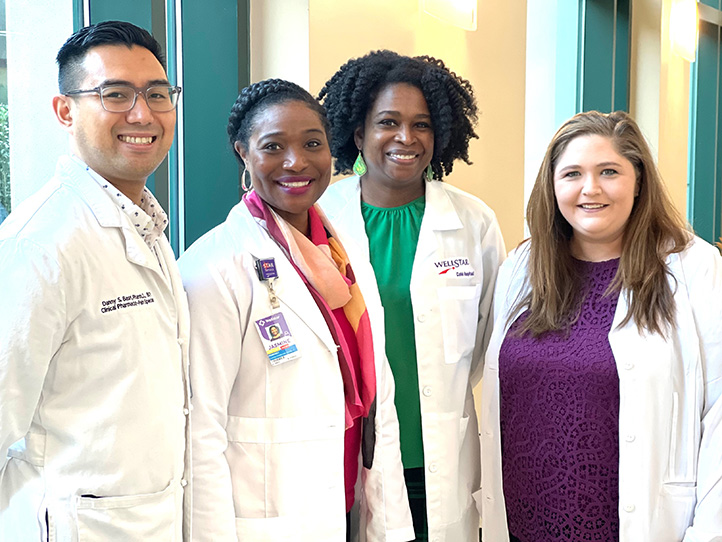Wellstar Health System
Marietta, GA
Nearly 500,000 people in the U.S. died from overdoses involving an opioid, including prescription and illicit opioids, from 1999-2019. By 2017, the U.S. Department of Health and Human Services declared a public health emergency for the abuse and overdose of opioids. In addition, the Joint Commission also issued supporting standards for the assessment and management of pain within the hospital setting. This required hospitals to become actively involved in promoting the safety of opioid use by targeting prescribing habits and improving quality of care.
Our health system made the commitment to improve patient care and safety by expanding pharmacy’s involvement with Opioid Stewardship. Our goals were to: 1) increase interprofessional collaboration for opioid safety at a local and system level, 2) promote safer prescribing practices, 3) foster the improvement of pain management-related knowledge and safer verification processes for pharmacists, and 4) improve safety at bedside related to opioid therapy monitoring. In 2018, pharmacist champions were designated at each of the facilities within our 10-hospital system outside of Metro-Atlanta. Those champions created the framework for interprofessional committees at the system and facility level to facilitate the completion of the stewardship program’s goals. Safer prescribing practices were targeted through Prescription Drug Monitoring Program access, improvements in urine toxicology screenings, order panel adjustments to meet best practices, and mitigation strategies for prescribing at discharge. Pharmacist verification skills improved with education and the development of policies to allow for adjustments to regimens and monitoring to prevent opioid related adverse events.
The program was associated with multiple improvements in opioid utilization. Order set changes resulted in a reduction of intravenous (IV) opioid utilization by 20%, an increase in nonopioid utilization (oral acetaminophen by 47% and IV ketorolac by 11%), and reduction in the percentage of doses of IV hydromorphone greater than or equal to 1.5 mg from 12% to 6%. Medication error documentation found that the average percentage of prevented medication errors to those reported per year improved significantly for various products (fentanyl patches (54.2%), methadone (65.7%), and buprenorphine products (33.3%)). Pharmacy intervention documentation showed an increased patient safety with discontinuation or prevention of inappropriate therapy (106.3%), the prevention of errors in those with renal or hepatic impairment (61.3%), prevention or treatment of opioid-induced constipation (43.1%), and methadone monitoring related to QTc prolongation and drug interactions (212.2%). Our goals and interventions resulted in a 35.5% reduction in patient opioid-induced respiratory depression (OIRD) events. The actual total cost savings of our health system for the reduction in OIRD is unavailable. However, the PRODIGY study found that reducing OIRD events by 20% for a median-sized hospital to be associated with a projected reduction in annual hospital costs by $535,531 and cumulative patient length of stay by 103 days. For this reason, we expect similar findings across the various facilities within the health system. Utilizing an opioid predictive risk model for increasing naloxone co-prescribing at discharge from the Emergency Department was associated with an opportunity to reduce harm for nearly 2,500 patients per year at one of the facilities and expected to be higher for the entire health system.
The impact of the opioid stewardship program has had is evident in the reduction in rate of OIRD events observed since implementation, potential opportunity to prevent future OIRD events at discharge, and estimated reduction of costs associated with the prevention of opioidrelated adverse events. In addition, the increased emphasis on opioid stewardship allowed for increased opportunities for professional development in pain management, new job positions, increased job satisfaction, and the expansion of our pharmacy residency program with the formation of Georgia’s first a postgraduate year two (PGY2) pain management and palliative care pharmacy residency.

From right to left: Elizabeth Pennington, Kimm Freeman, Jasmine Jones, and Danny Basri
